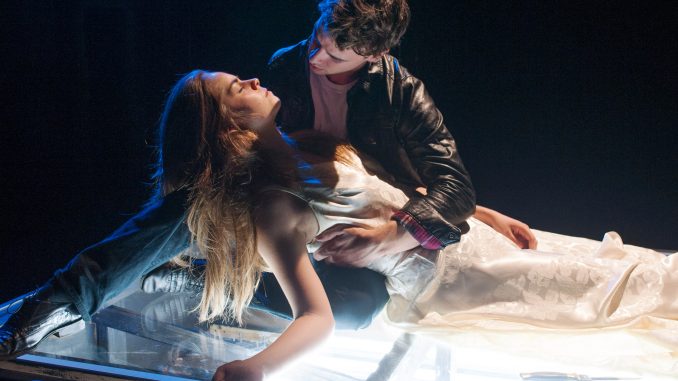
The beats of electronic dance music are just as welcome during a rave as they are during a Shakespearean monologue at the Sedgwick Theater in Mt Airy.
This synthesized style of music is the soundtrack of Quintessence Theatre Group’s depiction of William Shakespeare’s “Romeo & Juliet,” which fuses 20th and 21st-century life.
The play creates a paradoxical atmosphere with Elizabethan language, 1920s art deco architecture and onstage televisions.
Quintessence adopted the Sedgwick, previously closed from 1966 to 1995, in May 2010, shortly after the group was founded in 2009.
The company’s founder and artistic director Alexander Burns felt Philadelphia was lacking a regional theater dedicated to classic dramas.
“There are many incredible actors in Philadelphia who have experience and skills to do the classics,” Burns said. “But there just is not a place here in which it is curated and focused on and developed.”
Quintessence aims to translate the timeless works of playwrights like Shakespeare, Machiavelli and George Bernard Shaw for a contemporary audience while preserving the authentic text.
The group has a core ensemble of nine people and works in repertory—running more than one play a week during a timeframe of one to two months.
“By switching the plays back and forth, it keeps everything incredibly alive and immediate,” Burns said.
The group’s name comes from two different references of quintessence—one from “Hamlet,” a Shakespearean play that examines the center of humanity, and the other a belief from the Elizabethan era about the fifth element or stuff of the ether.
“I like that we have this word that means heavenly substance and also the purest form of something,” Burns said. “Because Shakespeare, to me, is the purest form of English language.”
In their sixth season, the ensemble converts Shakespearian tragedy through the reflections of today’s civic, social and cultural aspects.
12 consolidated televisions act as the epicenter of Quintessence’s “Romeo & Juliet,” serving as a modern platform of news media for the citizens of Verona.
“In their time, huge announcements would have brought the whole town together, and for us, we have TV and internet,” said Carolyn Fast, the show’s production stage manager. “And that’s one thing that is done so well here … integrating what’s at the root of these classic texts and having some aspect that a modern audience can really connect with.”
The collection of screens set scenes for the audience with dimly lit phrases revealing time and place. Transitions in the play are heard through an original EDM score created by renowned cinema, television and Broadway composer Steven Cahill.
According to Burns, EDM mirrors the steady tempo of drums Shakespeare used amid scene transitions of plays 400 years ago.
Aside from being a production tool, the music also emulates poetic syllables of the text.
“[EDM] is perfect for Shakespeare, because the beat is very much like the beat of iambic pentameter … it gives an energy that’s needed in terms of the theatrical event,” Burns said.
These musical transitions are meant to intensify the audience’s perspective, enabling them to see and feel the “full force of the poetry” at the same time, Burns said, because the play has been condensed from five acts to two.
“Audiences know when they come here they are not going to sit back and have a passive experience,” Fast said. “There is something so necessary in the work we’re doing here, something that I’m not finding in other places … a dedication to the text.”
Grace Maiorano can be reached at grace.maiorano@temple.edu.



Be the first to comment